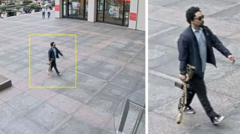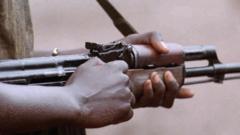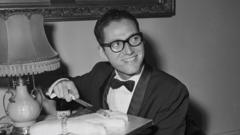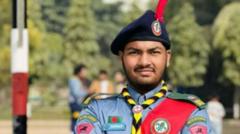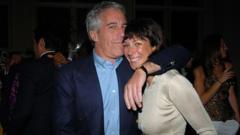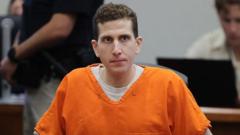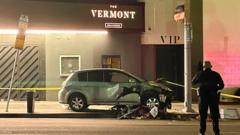A shooter opened fire at 345 Park Avenue, resulting in multiple casualties and causing mass panic among employees as they sought refuge during a chaotic evening. The shooter, identified as Shane Tamura, reportedly targeted NFL offices but went to the wrong location, ultimately leading to his self-inflicted death.
Chaos in Manhattan: A Shooting Spree Disrupts the Heart of New York
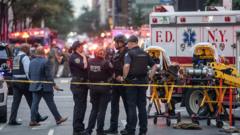
Chaos in Manhattan: A Shooting Spree Disrupts the Heart of New York
An attack in a Midtown skyscraper leaves four dead, including a police officer, and reveals the harrowing reality of gun violence in America.
On a sweltering summer evening in Midtown Manhattan, the iconic 345 Park Avenue became the scene of a tragic shooting that sent shockwaves through the heart of New York City. Around 6:30 PM EST, as workers began to wind down their day, a 27-year-old man named Shane Tamura from Las Vegas instigated chaos when he strode confidently into the lobby wielding an assault-style rifle.
Tamura had traveled cross-country, completing a journey through Colorado, Nebraska, and Iowa, before arriving in New York City. His intent—to reach the National Football League (NFL) offices—remained unfulfilled as he instead unleashed a barrage of gunfire that would ultimately claim the lives of four individuals, including NYPD officer Didarul Islam, and leaving several others injured.
Among those present was Jessica Chen, an employee working on the tower's second floor. The attack prompted her and many of her colleagues to barricade themselves in conference rooms while frantically texting family members about their fears. “I texted my parents, 'I love them,'” she recalled, encapsulating the dread that filled the skyscraper.
As the massacre unfolded, Tamura initially walked past a police officer stationed near the entrance but turned back to fire, killing Officer Islam instantly. He then continued to shoot indiscriminately at anyone trying to take cover, including a woman tragically caught in his sights.
Efforts to alert others in the building went underway as employees sent frantic emails and messages warning of the shooter. Ellen Chan, another witness, described how some managed to escape while others sought refuge indoors. The NFL's employees received warnings to remain silent and hidden until law enforcement intervened.
Compounding the horror, Aland Etienne, a security guard who attempted to activate an emergency elevator shutdown, was also killed as he took cover. Ironically, when Tamura eventually stepped into an elevator, he had mistaken his destination, ending up on the 33rd floor, far from the NFL offices he intended to attack.
Outside, a wave of law enforcement descended upon the scene, while terrified workers slowly evacuated the building with their hands raised, hearts racing in response to the unfolding tragedy. Among those who fled was an NFL employee, Craig Clementi, who sustained serious injuries during the chaos.
As the situation escalated, Tamura took his own life after shooting his final victim. Investigators later discovered a chilling three-page note on his body, including sentiments urging for his brain to be studied, revealing possible connections to chronic traumatic encephalopathy (CTE)—a brain condition commonly associated with injuries seen in contact sports like football.
With a documented history of mental health issues, Tamura left behind visible signs of distress about his perceived suffering and a disjointed grievance against the NFL, further highlighting the alarming intersection of gun violence and mental health challenges in contemporary society.
This devastating event not only shattered lives but also reignited the debate surrounding gun control and public safety in America, leaving many to grapple with the aftermath of violence and grief in public spaces.

